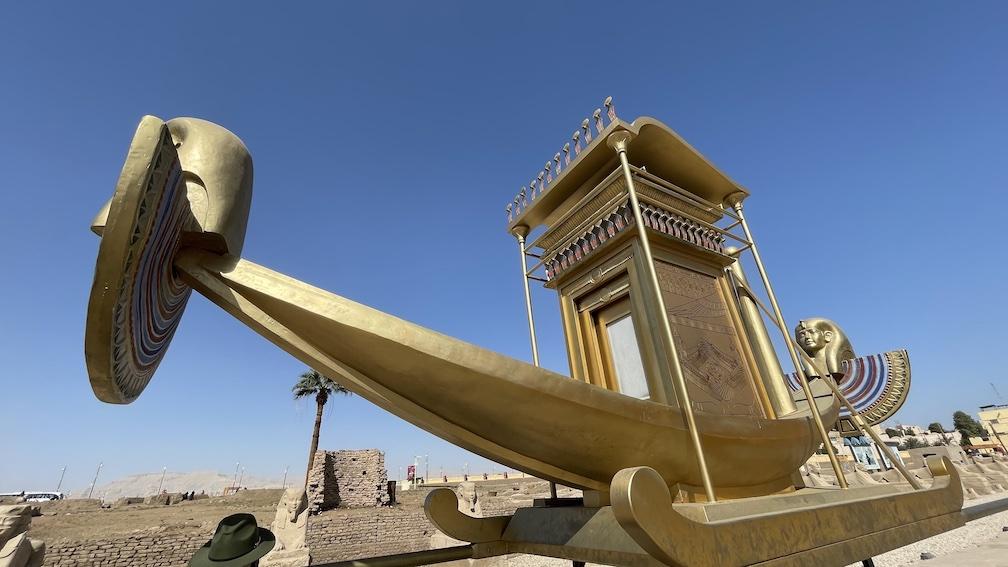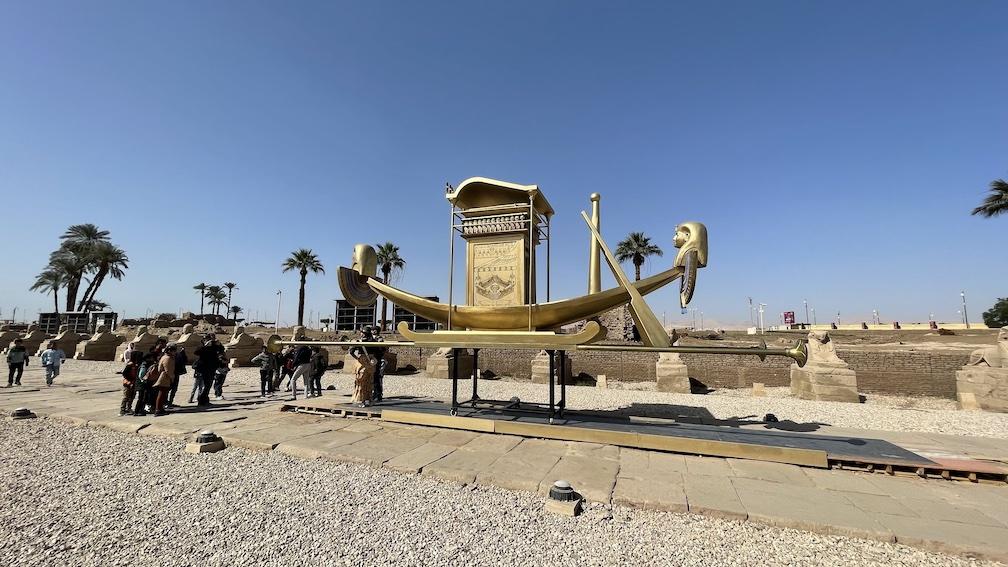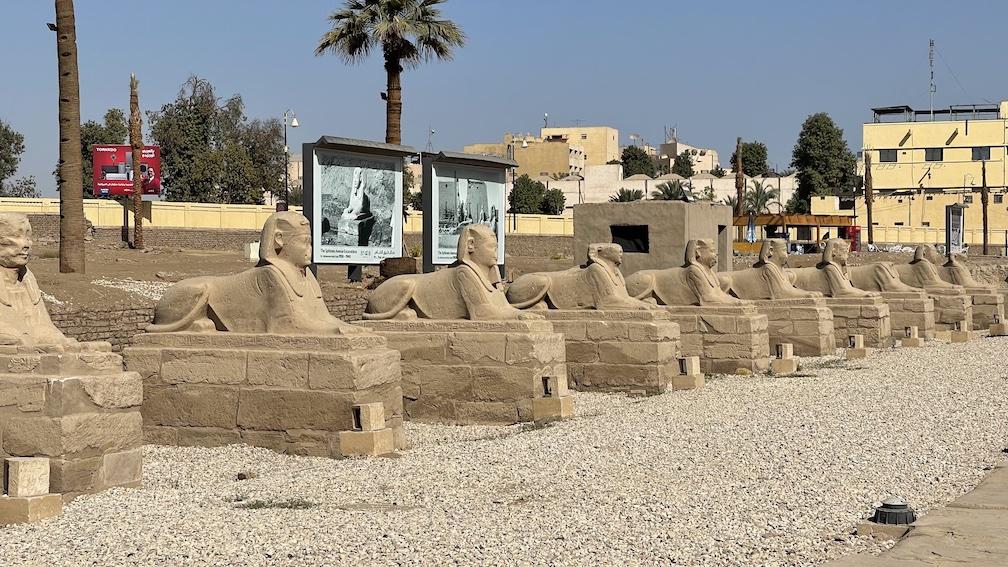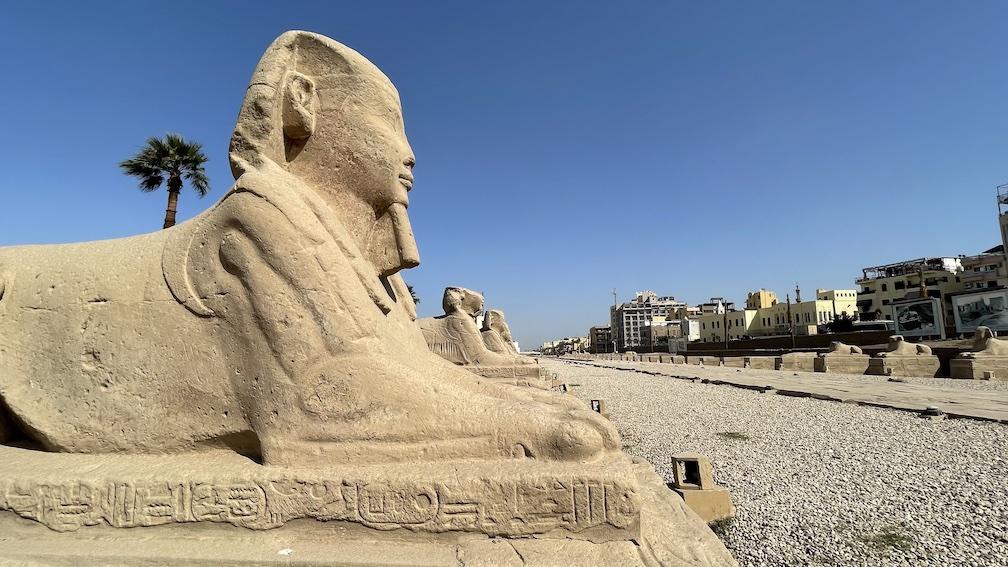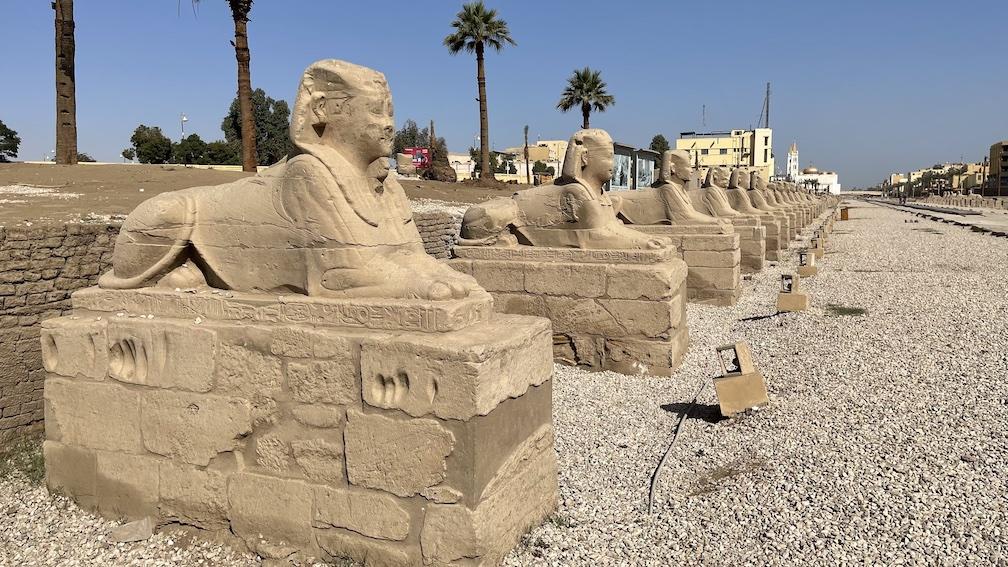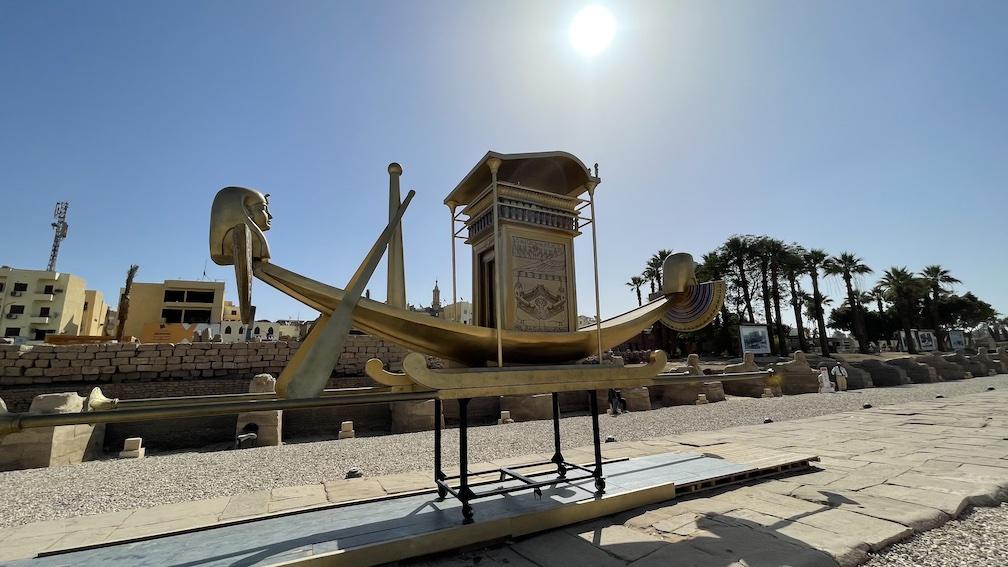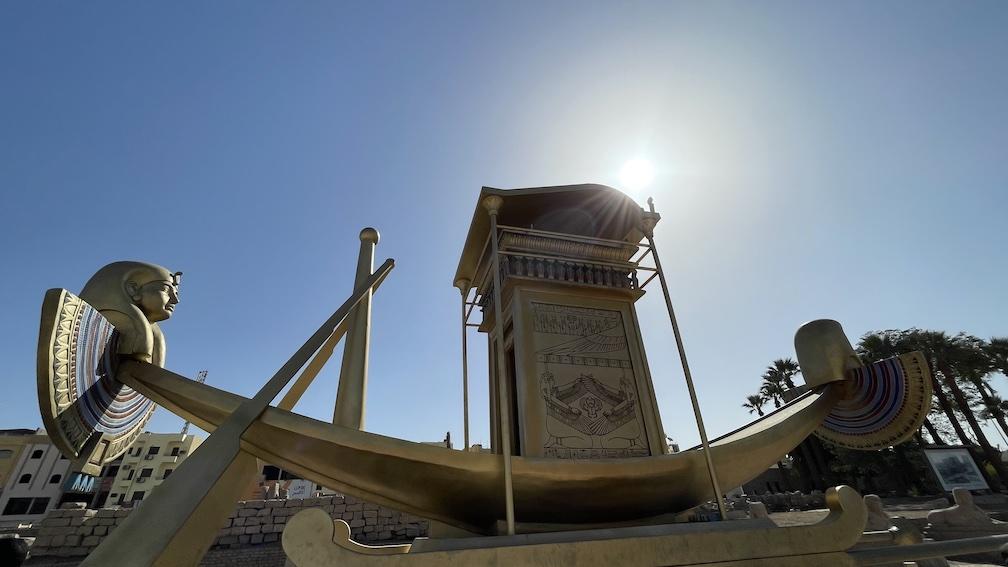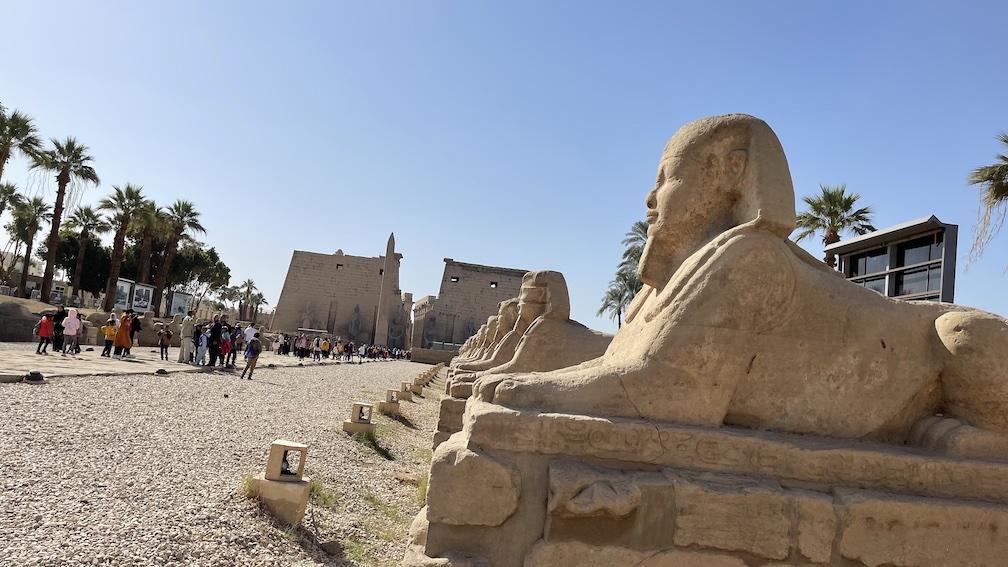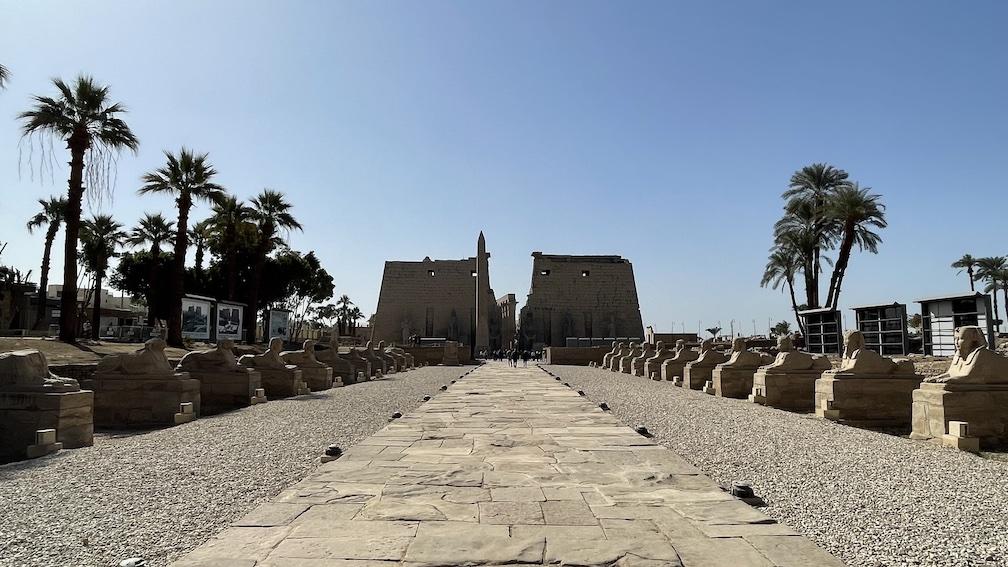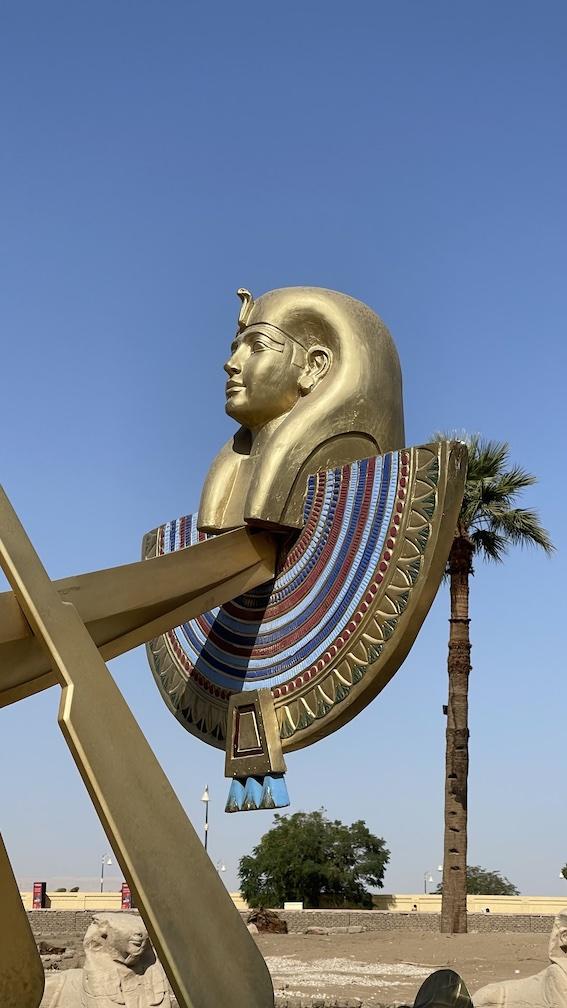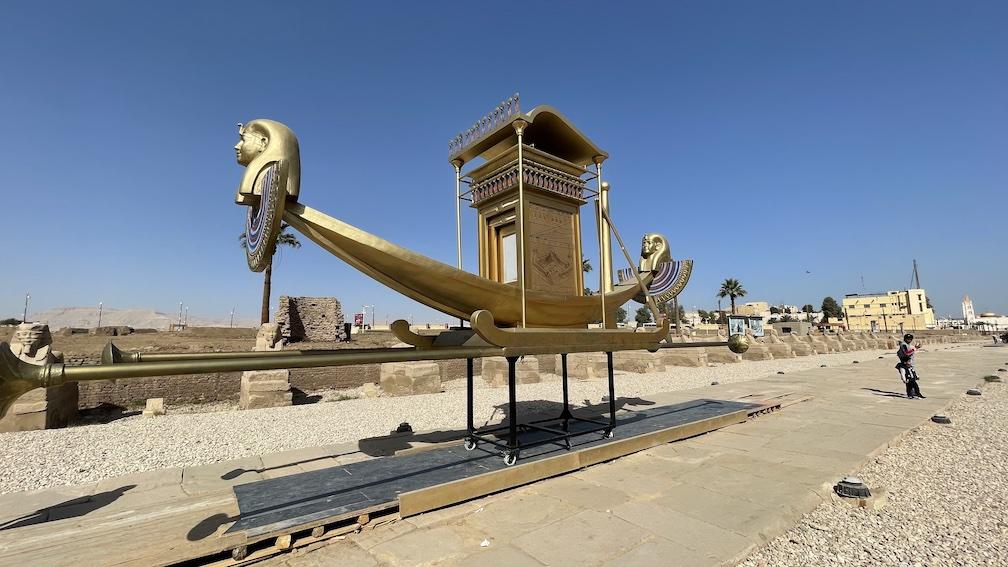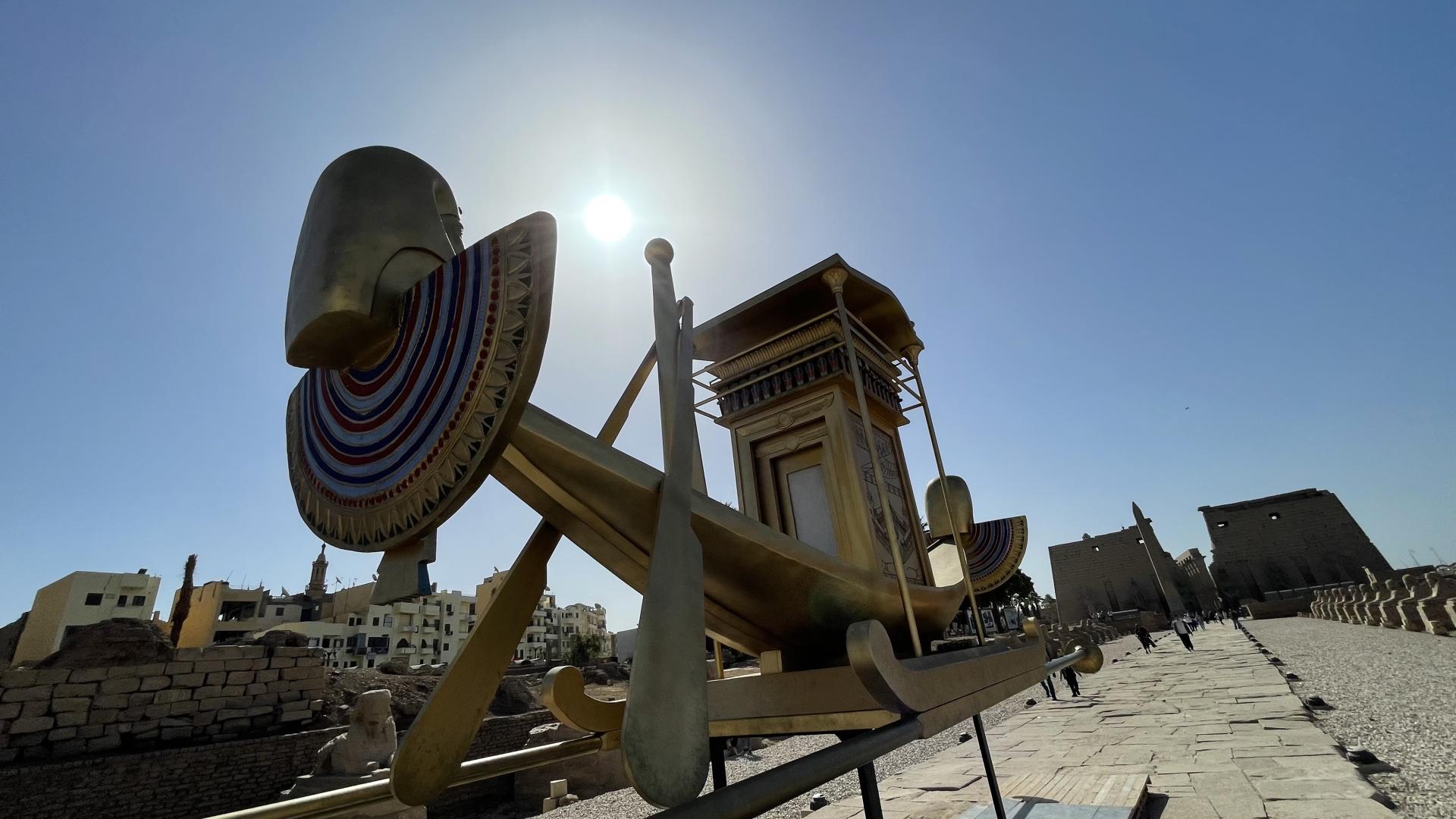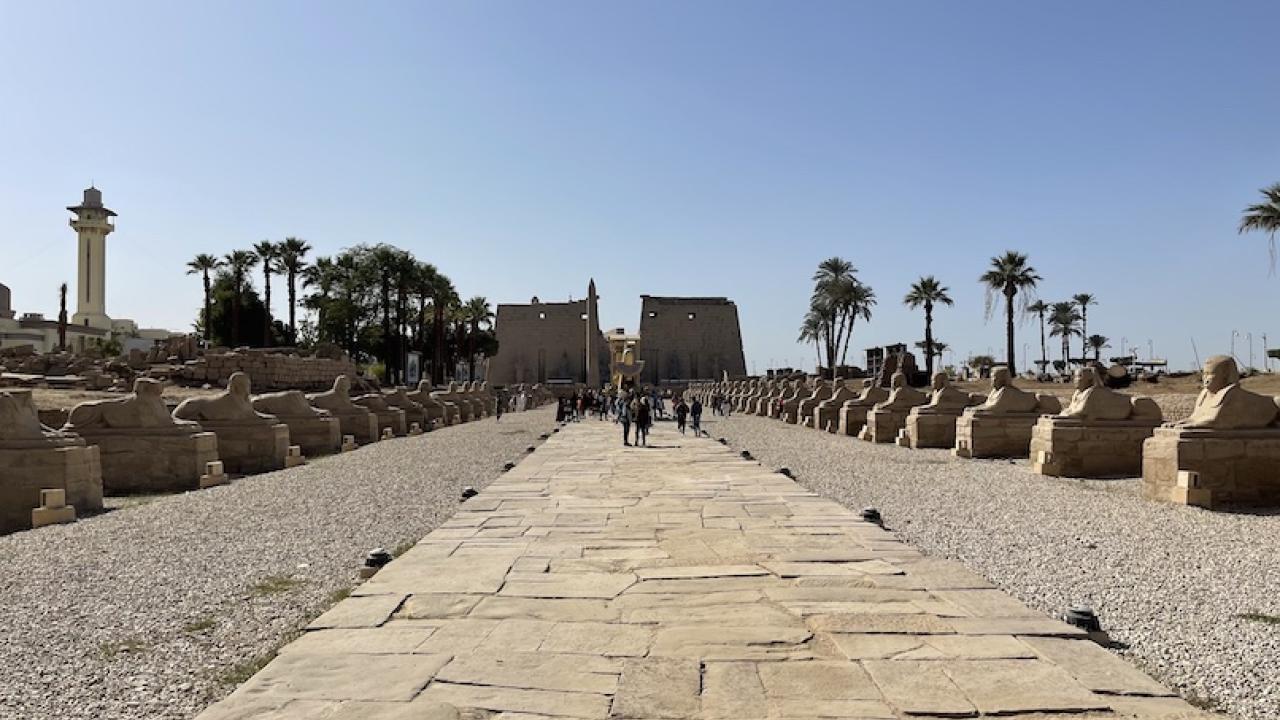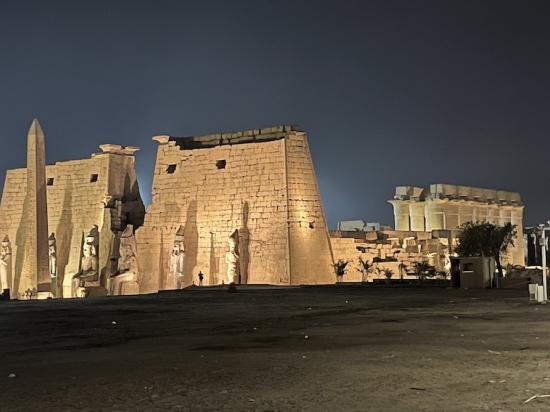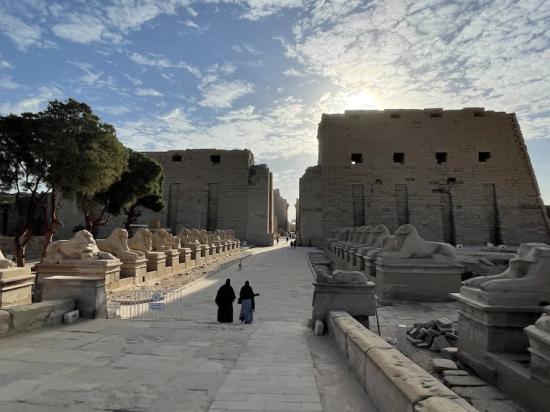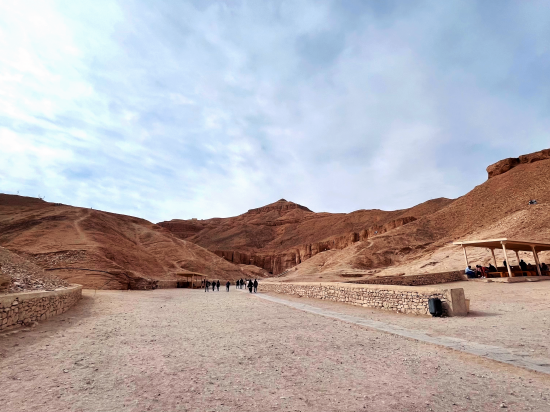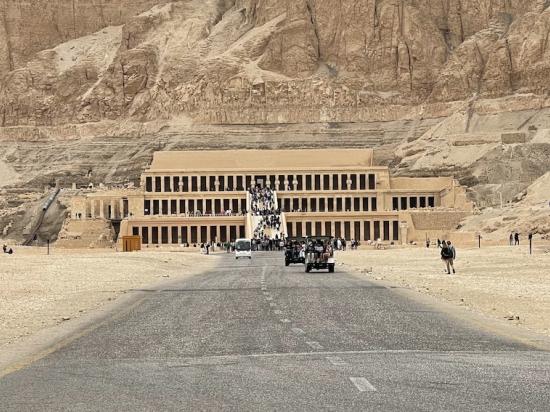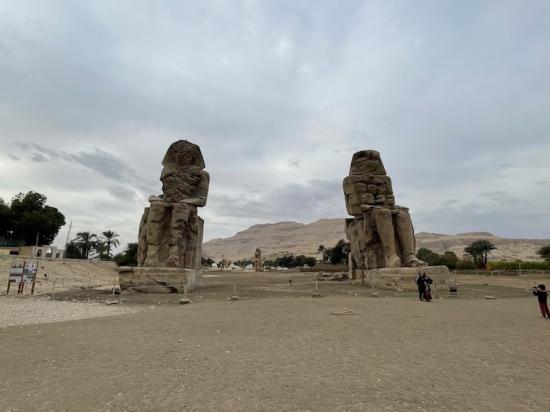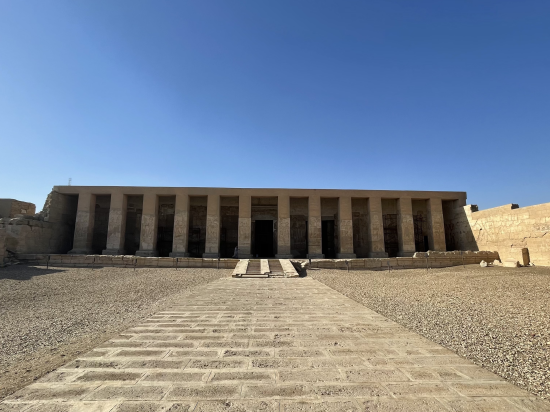The Avenue of the Sphinxes
Of course the people of Ancient Egypt celebrated with their supreme holy couple and the festivities became a fabulous party every year. We will get back on that later ...
The Avenue of the Sphinxes is an ancient road that stretches for nearly 2.7 kilometers (1.7 miles) from the Temple of Karnak to the Luxor Temple in Luxor, Egypt. The road was built during the reign of Pharaoh Amenhotep III (1390-1352 BC) and was later expanded and renovated by subsequent pharaohs.

The avenue is flanked on both sides by a row of sphinxes, which are mythological creatures with the body of a lion and the head of a human or another animal. The sphinxes were carved out of pink granite and originally had the head of Amenhotep III, but many of them were later re-carved with the head of Ramses II.
The avenue was an important route for processions and other religious ceremonies, and it was also used by pilgrims traveling between the two temples. In addition to the sphinxes, the avenue was also lined with large, ornate columns and impressive monumental gates.
The main reason for the building of the avenue was the Opet Festival. The Opet Festival was one of the most important religious festivals in ancient Egypt. It was held annually during the flood season in the second month of the inundation, which roughly corresponded to the month of September in the modern calendar. The festival lasted for about 27 days.
The festival was primarily dedicated to the god Amun, who was one of the most important deities in the Egyptian pantheon. The festival involved a grand procession of priests and worshippers who carried statues of Amun and his consort, Mut, from the temple of Karnak to the temple of Luxor, which was located about 3 kilometers away. The procession was accompanied by music, dancing, and offerings of food, wine, and other gifts.
Once the statues arrived at the temple of Luxor, they were placed in a special shrine and worshipped by the priests and the general public. The festival also involved the re-enactment of the marriage between Amun and Mut, which was believed to ensure the fertility of the land and the prosperity of the people. Today we can see a replica of the barge where the statue of Amun was transportet.

During the Opet Festival, the pharaoh would also participate in the ceremonies and make offerings to the gods. The festival was an important occasion for the pharaoh to demonstrate his piety and devotion to the gods, as well as to strengthen his ties with the priests and the people.
The Opet Festival continued to be celebrated throughout the history of ancient Egypt, and it remains an important cultural event in Luxor to this day.
The Avenue of the Sphinxes is a retlatively new tourist attraction, and visitors can stroll along the road and admire the impressive sphinxes and other ancient structures that line the way. The road has undergone extensive restoration work in recent years, and many of the sphinxes have been carefully cleaned and restored to their former glory.
